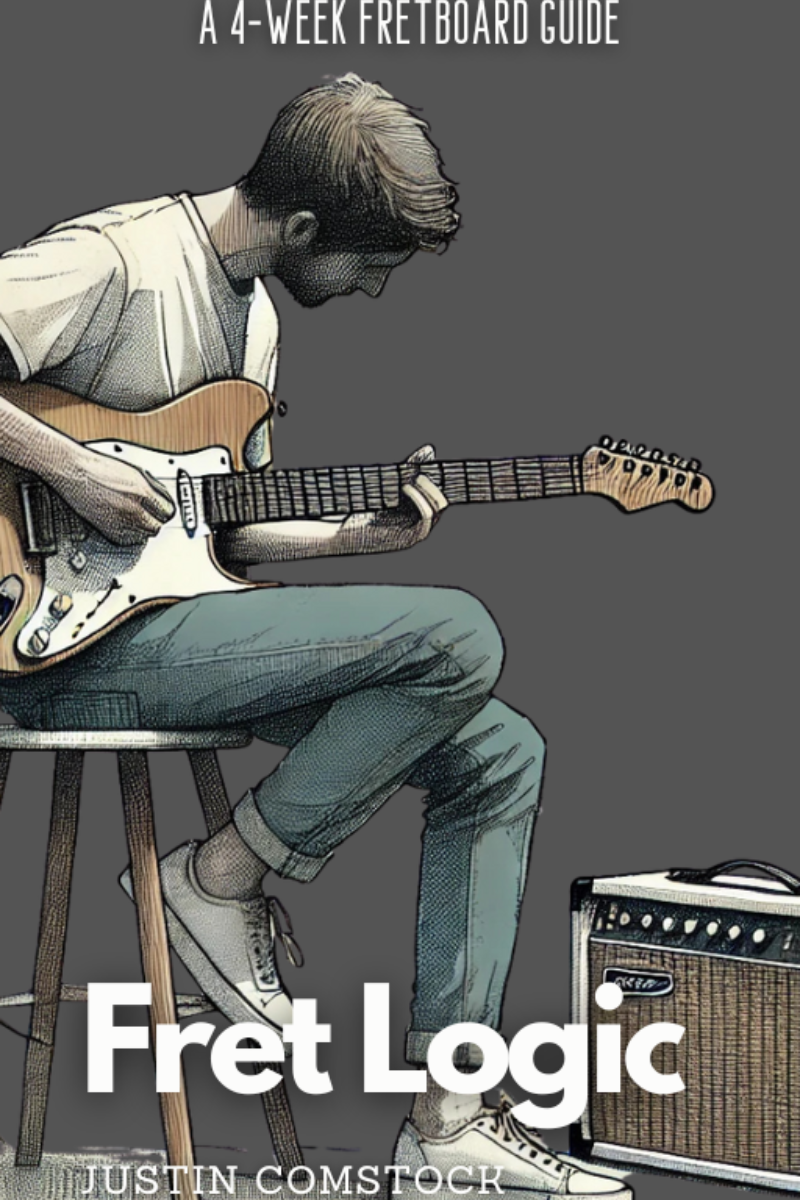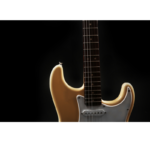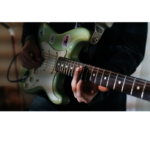Are you still stuck playing the same tired blues guitar chords?
Let’s be blunt: If your blues playing still sounds like a high school jam band covering Stevie Ray Vaughan at half speed, it’s time to level up. Blues is about feel, but it’s also about vocabulary. And if you’re only using a handful of chords—E7, A7, B7—you’re speaking the blues in baby talk.
Discover the Chord Secrets Pros Use
I was 16, hunched over a pawn shop Strat, fumbling through a 12-bar in A. It sounded fine—technically. But it didn’t feel like the records I loved: B.B. King, Albert Collins, Buddy Guy.
Then my teacher scribbled two chords on a napkin: A13 and D9. I played them. The room changed. That day I learned something you’re about to learn: the right chords don’t just fill space—they tell a story.
What Are Blues Guitar Chords, Really?
You know the classics. But blues chords are more than open shapes. They’re dominant, dirty, soulful. The lift from an A7 to a D9 isn’t just a change—it’s a conversation. And the chords that talk the best are the ones pros rely on: dominant 9ths, 13ths, and diminished chords.

❌ Stop Guessing. Start Shredding.
If you’re still fumbling through scale patterns and box shapes… it’s costing you progress.
FretDeck™ is the no-fluff system that shows you exactly how to master the fretboard—fast. Early access.
⚡️ This isn’t for dabblers. It’s for players who want results.
👉 Click here to join the pre-launch now
Early access. Limited rewards. Don’t wait.
The Bedrock: Dominant 7th Blues Guitar Chords
Let’s start with the heart of the blues.
A7 (open position):
e|---0---
B|---2---
G|---0---
D|---2---
A|---0---
E|-------Try a subtle hammer-on to the C# on the B string. That’s the kind of movement that makes your rhythm section grin.
Next-Level Extensions: 9ths and 13ths
A9: The smooth operator.
e|---0---
B|---0---
G|---2---
D|---0---
A|---2---
E|---0---E13: The secret sauce.
e|---0---
B|---0---
G|---1---
D|---1---
A|---2---
E|---0---Use it in your turnaround. Feels like cruising down Beale Street.
The Emotional Blues: Minor and Diminished Chords
Sometimes the blues doesn’t shout—it weeps.
Minor Blues Progression (Key of Am):
| Am | Am | Am | Am |
| Dm | Dm | Am | Am |
| E7 | Dm | Am | E7 |Think “The Thrill is Gone.” Slow. Simmering. Sincere.
D#dim7: Adds drama.
e|---1---
B|---0---
G|---1---
D|---0---
A|-------
E|-------Slip it between A7 and D7. Cinematic tension in a single move.
The 12-Bar Blues: And Why It Still Rules
Classic structure. Eternal power.
| A7 | A7 | A7 | A7 |
| D7 | D7 | A7 | A7 |
| E7 | D7 | A7 | E7 |Pro Tweaks:
- Swap A7 with A9 or A13
- Add D#dim7 before D7
- Turnaround magic: A7 – F#7 – B7 – E7
3 Must-Know Blues Progressions
1. Chicago Shuffle in G
| G9 | C9 | G9 | G9 |
| C9 | C#dim7 | G9 | E9 |
| A9 | D9 | G9 | D9 |2. Slow Burn in E Minor
| Em | Em | Em | Em |
| Am7 | Am7 | Em | Em |
| B7 | Am7 | Em | B7 |3. Jazz-Infused Blues in C
| C13 | F9 | C13 | C13 |
| F9 | F#dim7 | C13 | A7 |
| Dm9 | G13 | C13 | G13 |🎸 Unlock the Neck: Back FretDeck on Kickstarter
You know the sound. But can you find the notes?
Most players get stuck noodling in one pentatonic box. It’s not your fault—it’s how we were taught. But FretDeck fixes that.
FretDeck is a physical, hands-on system that trains your brain to see the fretboard.
It’s the method I wish I had as a 16-year-old trying to play like Albert Collins. And now it’s available on Kickstarter.
✅ Here’s What You Get
- 60 Visual Scale Cards (12 keys × 5 patterns)
- Practice Prompts to challenge your creativity
- Bonus Mini-Course: Pentatonic Secrets
- Exclusive Discord Access: Guitar Freaks Hangout
Why It Works
Because it turns shapes into music. You stop guessing. You start soloing.
🔥 Back it now on Kickstarter – early bird rewards go fast. 👉 Back FretDeck Now 👉 Join Guitar Freaks Hangout – get the free eBook Fret Logic when you join.

Join Guitar Freaks Hangout on Discord! 🎸
Get Fret Logic FREE!
Join the Guitar Freaks Hangout Discord and get exclusive access to my entire e-book, Fret Logic! Master the fretboard and elevate your solos with this comprehensive guide.
👉 Don’t miss out—join now and download your free copy!
Final Thoughts: Why Blues Guitar Chords Matter
Blues isn’t just three chords and the truth. It’s knowing which three chords to play—and how to bend that truth.
The right voicing, the right extension, the right tension and release—that’s where real emotion lives. And if you want to play like the legends? It starts with knowing your fretboard.
👉 Back the FretDeck Kickstarter 👉 Join the Guitar Freaks Hangout Discord 👉 Download your free copy of Fret Logic when you join
Stop sounding like everyone else. Start sounding like you.
Let’s unlock the neck—one chord at a time.
Want to dive deeper into the five shapes of the pentatonic scale? Check out our full guide on guitar pentatonic patterns to see how they connect across the entire fretboard.










